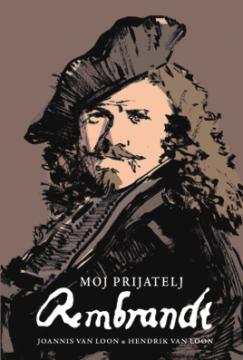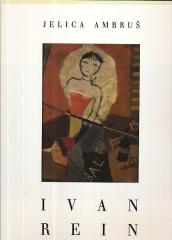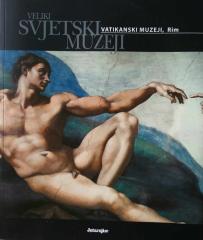
Moj prijatelj Rembrandt - prema dnevnicima dr. Joannisa Van Loona napisao, dopisao i priredio Hendrik Willem Van Loon
The book by Rembrandt's contemporary and friend, with whom he spent the last thirty years of his life, is a first-hand account of the life and character of the famous artist. Joannis van Loon is a fictional character by author Hendrik Van Loon.
"The public do not understand my intentions at all... they laugh derisively and say: 'He is not an artist by trade, he does not take his art seriously and does not paint things as we see them.' May God protect me so that I see things through their eyes. They can and they will let me starve, but they will not rob me of my conviction that I am right and they are wrong. Anyone can paint things as they are. But painting things as they exist only in assumption - that, dear doctor, is a task that makes life interesting... because it is not so much about what one sees, but how one sees. A good artist can feel a deeper urge by looking at a slaughtered ox in some ordinary butcher shop, than a bad artist by seeing a dozen churches in the very birthplace of Raphael. I cannot paint differently than what I paint. I stick to my way of painting and I will stick to it until I go to the almshouse or lie down in the grave. Then you can put a tombstone on me with the inscription: 'Here rests a madman'."
The aforementioned quote from Rembrandt is just a hint that gives an idea of how many interesting thoughts of the painter and details from his life are in this book. Because it was written by his contemporary, Joannis van Loon, a doctor and friend with whom he spent the last 30 years of his life. This "first-hand" testimony was prepared for the press by the distinguished historian and writer Hendrik van Loon, the doctor's, as he states, "descendant in the ninth generation". (Joannis van Loon is a fictional character of author Hendrik Willem Van Loon.)
About Rembrandt himself, we only say here that he lived in the land of windmills, a hard and unenviable life, without money, recognition and understanding, fighting windmills in people's heads all his life. And today? The painting "The Night Watch", for example, which was once rejected and an object of ridicule, is now an object of study and admiration, and is one of the greatest Dutch cultural and tourist values, and its author is generally recognized as one of the greatest, most influential, most distinctive, most important , the most ingenious, the most... painter in the history of art and one of the greatest people in the history of mankind. What else to add? Perhaps another opinion about Rembrandt from this excellent biography: "When he gave in to his dreams, he lost everything he had - and gained everything."
One copy is available
- The front sheet is missing





